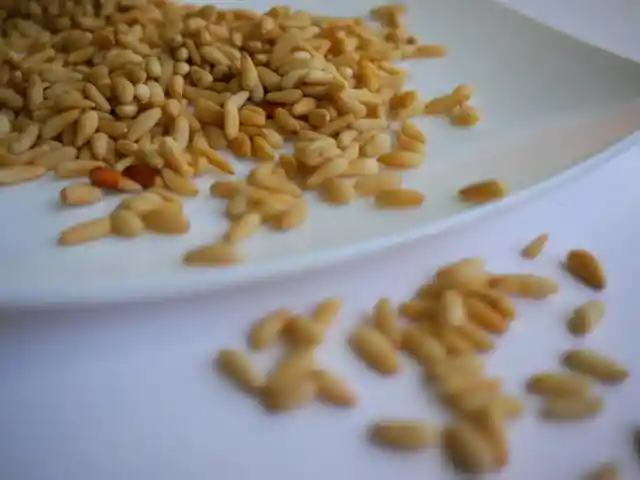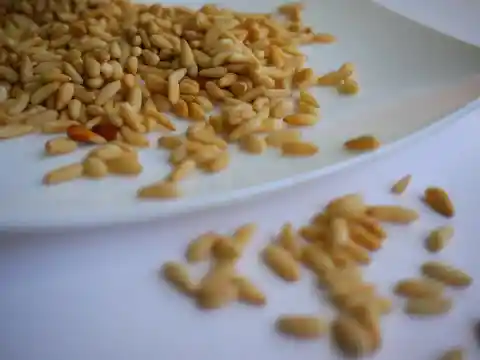It's a bit of a mystery: the pine nut. It is expensive, delicious, and indispensable in a salad. But where do we get these seeds?


Pine nuts grow wild
You may not realize it, but pine nuts are not grown specifically for sale. They are gathered in the forest. Or rather: the pine cones that contain the kernels are gathered or picked. Yes, you read it correctly: pine nuts are hidden in a pine cone.
Depending on the tree species, there are between 50 and 100 seeds in a pine cone. To get them out, the pine cone must first be laid out to dry. The seeds of four species of trees go all over the world: the Pinus koraiensis (China), Pinus sibirica (Siberia), Pinus gerardiana (Afghanistan), and Pinus pinea (Italy). Four different trees also mean four different types of pine nuts. For example, those from Italy are longer than those from China.
Pine nuts come from China
The largest producers of pine nuts in Europe are Italy, Spain, and Portugal. Production in these countries is so small that they cannot serve themselves and the rest of Europe. The Italians, for example, desperately need their seeds for the production of pesto. China is the market leader when it comes to selling pine nuts. The Chinese extract them not only from their forests, but also from those of Mongolia, North Korea, Pakistan, and Russia. Then they resell them as Chinese pine nuts.


Sick from pine nuts
Some bags contain a stray non-edible pine nut (Pinus armandii). As far as we know, this is only a risk if the kernels are imported from China. If you ingest one, you are at risk of developing pine nut syndrome. About two days after ingestion, you get a metallic, bitter taste in your mouth. This can last up to two weeks. This is very unpleasant, but fortunately not dangerous.
If you want to enjoy your pine nuts carefree, it pays to take a closer look at them before eating them. The non-edible seeds are hard to distinguish from the edible variety, but according to the Belgian Poison Control Center, they are slightly smaller, less angular, and a bit more beige.